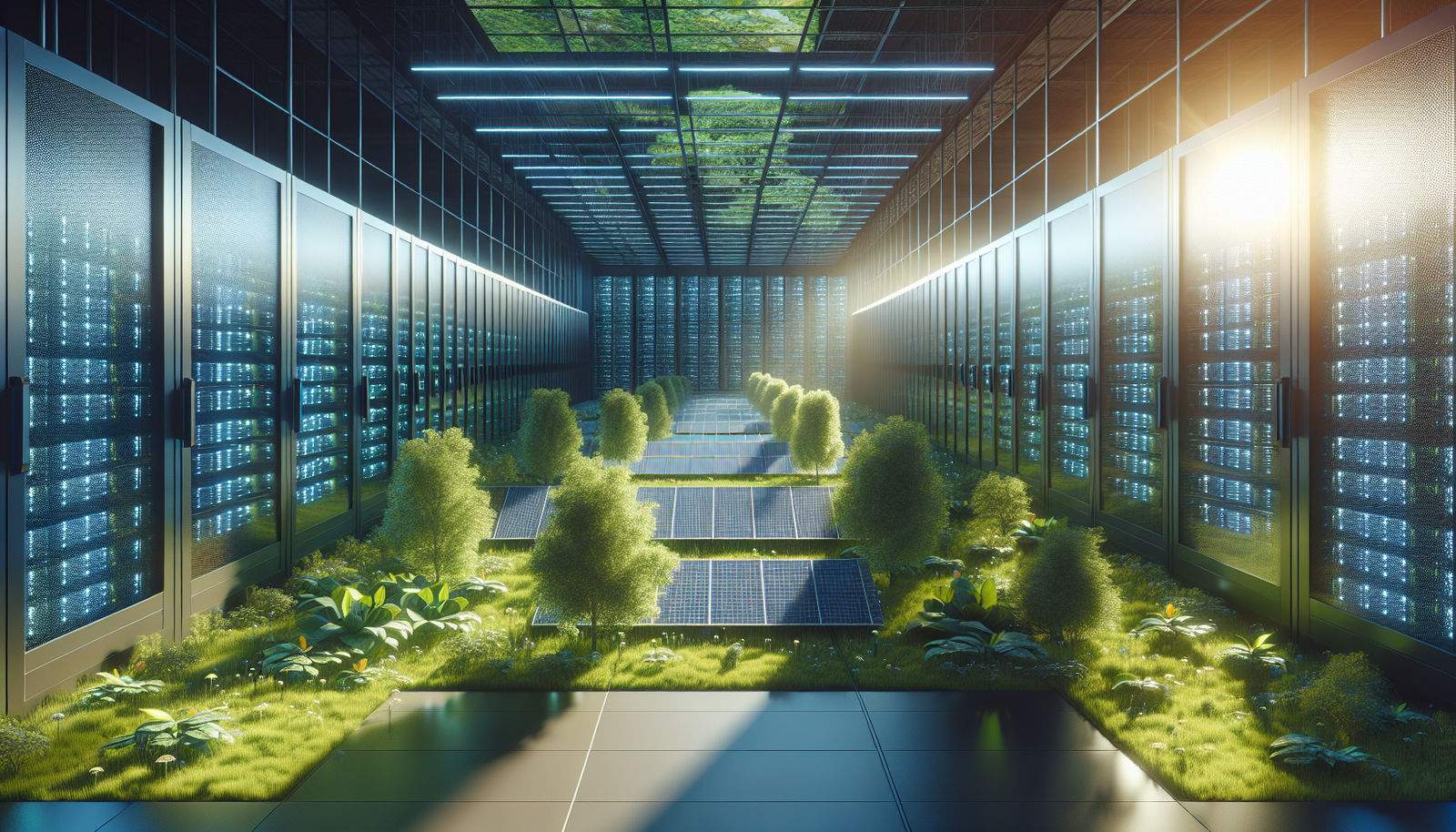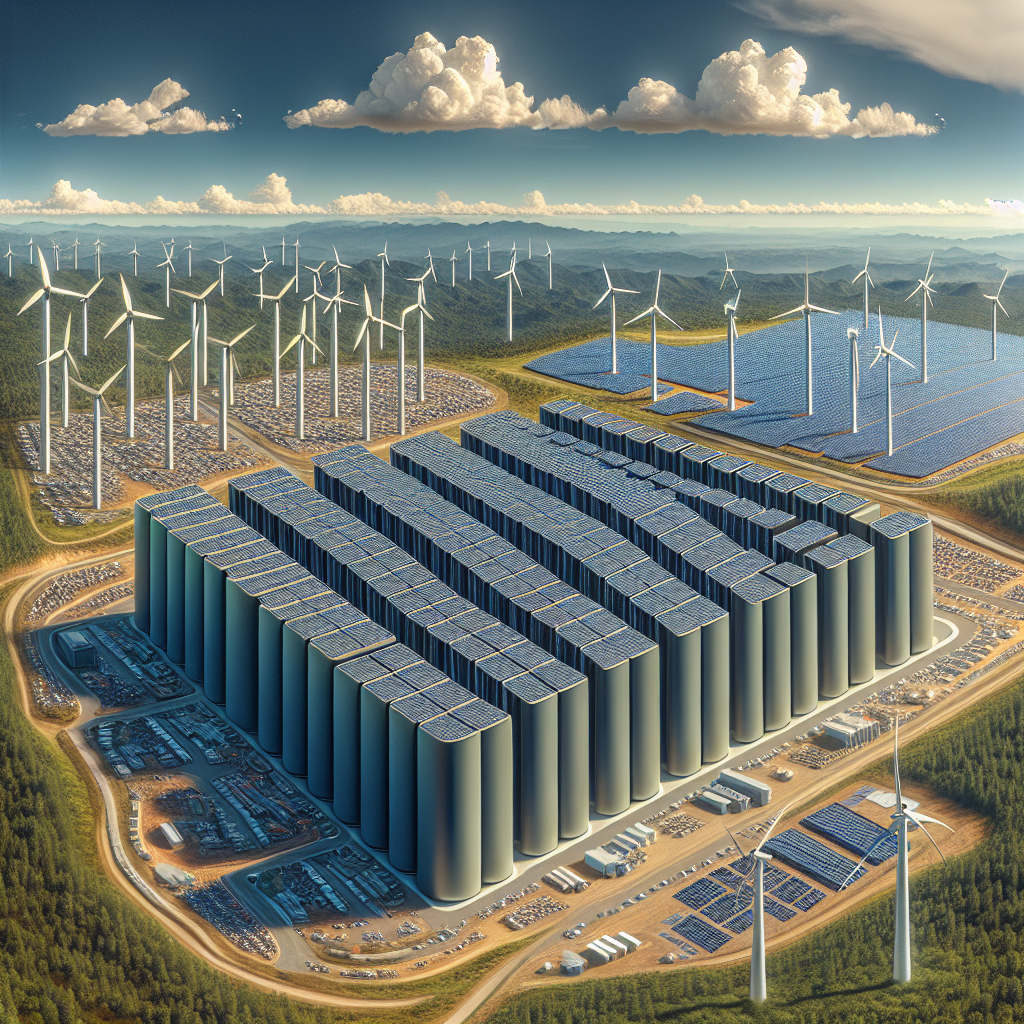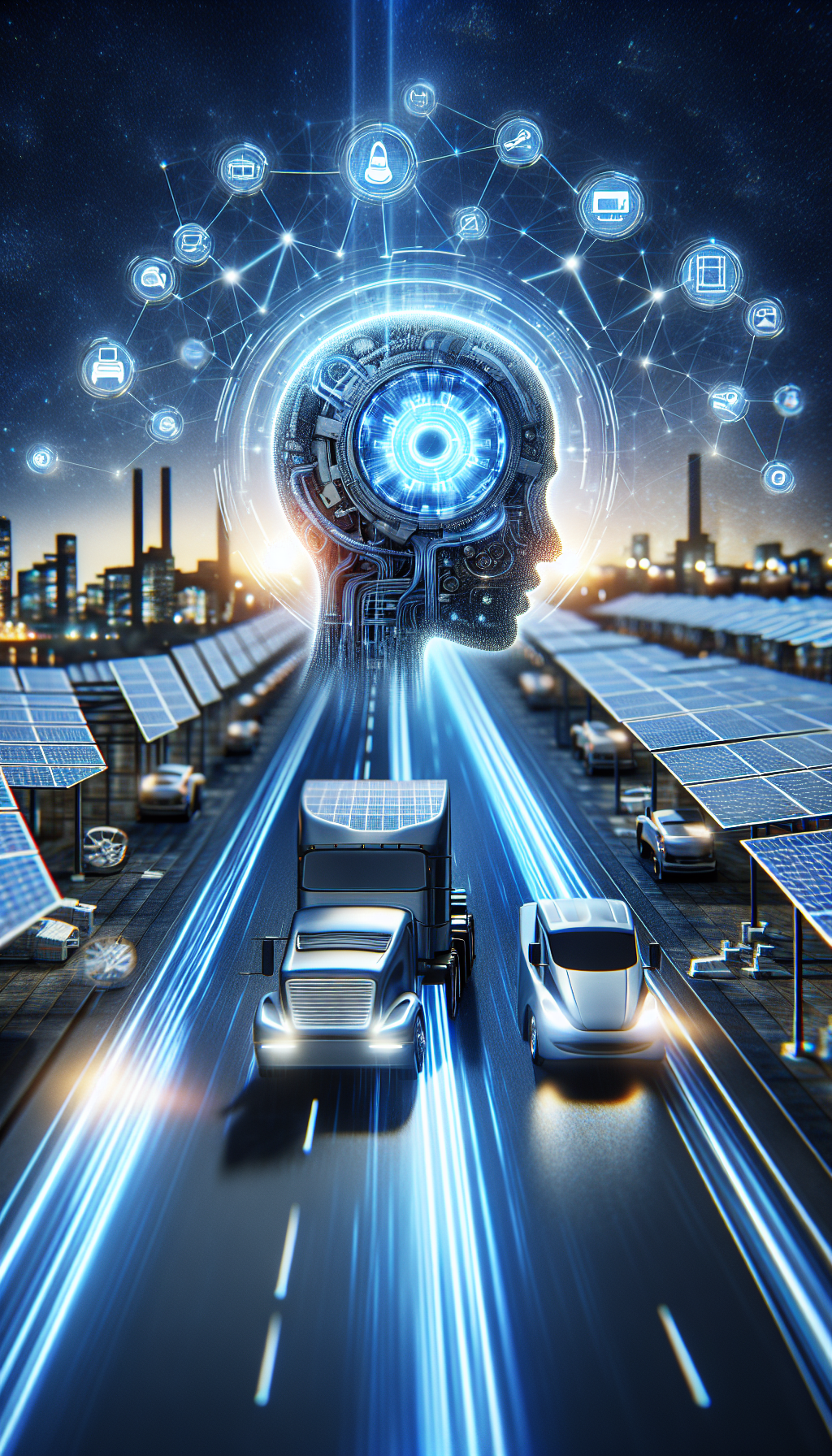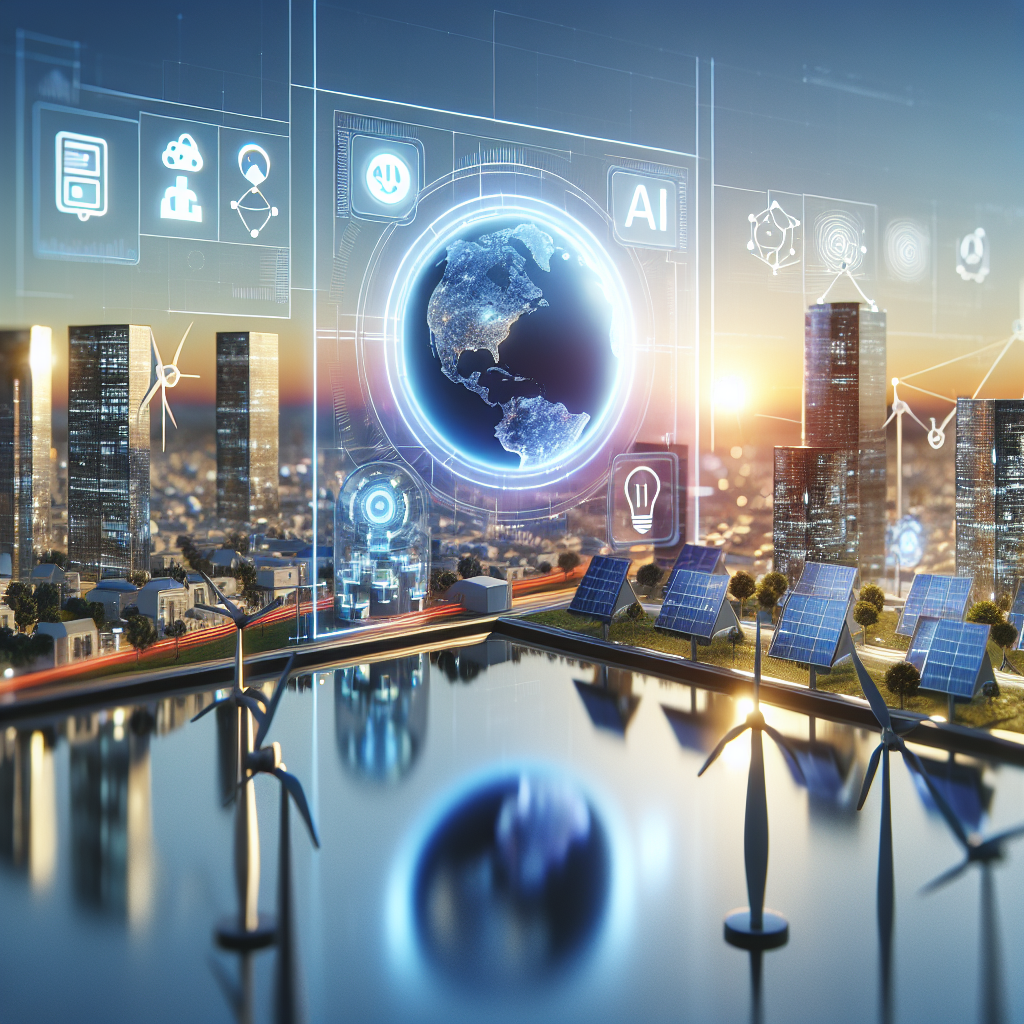The Environmental Footprint of Data Centers
Data centers are often described as the backbone of the digital era, powering everything from social media to cloud computing. However, their environmental footprint is a growing concern. Data centers consume approximately 1% of the world’s total energy demand, a figure that is expected to rise with the increasing demand for digital services. The energy consumption is primarily due to the need to keep servers cool and operational 24/7. This energy use contributes significantly to carbon emissions, making it imperative for the industry to seek sustainable solutions.
One of the most pressing issues is the reliance on non-renewable energy sources. Many data centers still depend heavily on fossil fuels, further exacerbating their environmental impact. Efforts to transition to renewable energy sources are underway, but progress is uneven. As part of a broader strategy to minimize the environmental impact, there is a growing emphasis on integrating renewable energy resources into the energy grid of data centers. This transition not only aims to reduce carbon emissions but also to stabilize energy costs in the long term.
Another critical factor is water usage. Data centers require vast amounts of water for cooling, which can stress local water supplies. An innovative approach to reducing water usage involves deploying advanced cooling technologies and implementing AI-driven systems that optimize cooling processes. This can significantly reduce water consumption and the overall environmental footprint. The following table provides a summary of the key environmental impacts of data centers:
| Environmental Impact | Description |
|---|---|
| Energy Consumption | Data centers consume large amounts of electricity, contributing to global energy demand. |
| Carbon Emissions | High energy usage leads to significant carbon emissions, especially when powered by fossil fuels. |
| Water Usage | Cooling systems require substantial water resources, impacting local water availability. |
AI: The Catalyst for Sustainable Change
Artificial Intelligence (AI) is at the forefront of the transformation towards sustainable data centers, acting as a catalyst for change by optimizing operations and significantly reducing environmental impact. The integration of AI in data centers allows for real-time analysis and decision-making, enhancing energy efficiency and minimizing waste. AI systems can monitor and manage energy consumption patterns, predicting demand fluctuations and adjusting accordingly to ensure optimal use of resources.
One of the key benefits of AI in data centers is its ability to streamline energy management. By employing machine learning algorithms, AI can analyze historical data to forecast energy needs, ensuring that energy use is aligned with actual demand. This proactive approach reduces unnecessary energy consumption and helps in integrating renewable energy sources. For instance, AI can optimize the use of solar or wind energy by predicting weather patterns and adjusting energy storage and distribution systems accordingly.
| AI Function | Impact on Sustainability |
|---|---|
| Energy Demand Forecasting | Reduces overconsumption and aligns energy use with actual demand. |
| Resource Optimization | Ensures efficient use of both renewable and non-renewable resources. |
| Predictive Maintenance | Minimizes downtime and energy waste by anticipating equipment failures. |
AI also plays a crucial role in predictive maintenance, which is essential for the sustainability of data centers. By continuously monitoring the performance of equipment, AI can predict potential failures before they occur, allowing for timely maintenance and reducing downtime. This not only extends the lifespan of equipment but also decreases the energy waste associated with unexpected breakdowns.
Furthermore, AI-driven systems enable dynamic load balancing, which is vital for maintaining the efficiency of data centers. By distributing workloads evenly across servers, AI prevents overloading and underutilization, ensuring that each server operates at its peak efficiency. This balance reduces the overall energy footprint and contributes to a more sustainable operation.
Optimizing Energy Usage with AI
In the quest to optimize energy usage, AI technologies are playing a pivotal role in transforming data centers into models of efficiency. By leveraging machine learning algorithms and predictive analytics, data centers can dynamically adjust their energy consumption to match real-time demands. These AI-driven systems continuously monitor energy usage patterns and identify inefficiencies that would otherwise remain unnoticed. For instance, by analyzing historical data and current workload requirements, AI can predict peak usage times and adjust cooling systems accordingly.
One of the key strategies involves using AI to manage and optimize the operation of servers, cooling systems, and power distribution units. AI can intelligently distribute workloads across servers to ensure that no single unit is overburdened, which minimizes the risk of overheating and reduces the overall energy footprint. Moreover, AI systems can automate the control of cooling mechanisms, such as air conditioning and liquid cooling systems, by precisely adjusting them based on the immediate thermal needs of the equipment.
The integration of AI in energy management is further enhanced by the use of visualization tools that provide a comprehensive overview of energy consumption patterns. These tools typically present data in a user-friendly format, such as tables and lists, allowing for easy interpretation and decision-making. Below is a simplified representation of potential energy savings through AI optimization:
| Optimization Technique | Expected Energy Savings (%) |
|---|---|
| Dynamic Server Optimization | 15-20% |
| Automated Cooling Management | 20-30% |
| Predictive Maintenance | 10-15% |
Furthermore, AI not only enhances energy efficiency but also fosters sustainability by integrating renewable energy sources into data center operations. AI algorithms can predict energy production from solar and wind sources, allowing data centers to switch between traditional and green energy solutions seamlessly. This integration ensures that data centers are not only reducing their carbon footprint but are also contributing to a sustainable energy future.
Reducing Carbon Emissions through AI Innovations
Artificial Intelligence (AI) plays a crucial role in reducing carbon emissions within data centers. By leveraging AI algorithms, data centers can optimize their energy usage patterns, significantly lowering their carbon footprint. AI systems can analyze vast amounts of operational data in real-time, identifying inefficiencies and suggesting improvements that would be otherwise impossible to detect manually. This data-driven approach enables data centers to implement proactive measures that minimize energy waste and enhance overall operational efficiency.
One of the primary ways AI reduces carbon emissions is through predictive analytics. AI can predict future energy demands based on historical data and current usage trends, allowing data centers to adjust their power consumption accordingly. This results in a more efficient use of energy resources, reducing the need for excess power generation, which often relies on fossil fuels. Moreover, AI-driven cooling systems can dynamically adjust temperature settings to maintain optimal conditions with minimal energy expenditure, further contributing to emission reductions.
| AI Innovation | Impact on Carbon Emissions |
|---|---|
| Predictive Analytics | Enhances energy forecasting, reducing unnecessary power usage |
| Smart Cooling Systems | Optimizes temperature control, cutting down excessive energy consumption |
In addition to optimizing energy use, AI facilitates the integration of renewable energy sources into data center operations. AI algorithms can intelligently manage the variable nature of renewable energy, such as solar or wind power, ensuring these resources are used effectively even as they fluctuate. By seamlessly blending renewable energy with traditional power sources, AI helps data centers maintain a reliable power supply while minimizing reliance on carbon-intensive energy production methods.
- Dynamic Energy Management: AI systems balance energy loads between renewable and non-renewable sources efficiently.
- Energy Storage Optimization: AI improves the efficiency of energy storage systems, ensuring that surplus renewable energy is stored and utilized when needed.
Smart Cooling Systems and AI
Smart cooling systems are at the forefront of reducing energy consumption in data centers, and AI technologies play a pivotal role in optimizing these systems. Traditional cooling methods often operate continuously at maximum capacity, leading to excessive energy use and increased operational costs. However, AI-driven cooling systems dynamically adjust cooling output based on real-time data analysis, significantly enhancing energy efficiency. By utilizing machine learning algorithms, these smart systems can predict temperature fluctuations and adjust cooling mechanisms accordingly, ensuring optimal performance while minimizing energy waste.
The implementation of AI in cooling systems involves analyzing data from various sensors placed throughout the data center. These sensors monitor temperature, humidity, and equipment workload to provide a comprehensive overview of the environmental conditions. AI algorithms process this data to identify patterns and predict future cooling requirements. This approach not only reduces energy consumption but also extends the lifespan of cooling equipment by preventing unnecessary wear and tear. As a result, data centers can achieve a significant reduction in their carbon footprint, contributing to a more sustainable operation.
Moreover, AI-driven cooling systems facilitate the integration of renewable energy sources. By optimizing energy use and aligning cooling needs with the availability of renewable resources, data centers can maximize their reliance on green energy. This is particularly beneficial during peak demand periods, where conventional energy sources are heavily taxed, and renewable energy can offer a sustainable alternative. The synergy between AI and renewable energy not only enhances energy efficiency but also promotes environmental responsibility.
| Cooling Method | Energy Consumption Reduction (%) | Carbon Emissions Reduction (%) |
|---|---|---|
| Traditional Cooling | 0 | 0 |
| AI-Driven Cooling | 30-40 | 20-30 |
In conclusion, the integration of AI in smart cooling systems represents a significant advancement in the pursuit of sustainable data center operations. By intelligently managing cooling resources and incorporating renewable energy, AI technology not only improves energy efficiency and reduces carbon emissions but also sets a new standard for environmental stewardship in the tech industry.
AI-Enhanced Renewable Energy Integration
AI technologies are playing a pivotal role in integrating renewable energy sources into data center operations. By leveraging advanced algorithms and machine learning models, AI systems can predict energy production from renewable sources such as solar and wind, which are inherently variable. This predictive capability allows data centers to optimize the use of renewable energy and minimize reliance on non-renewable power sources. For instance, AI can forecast solar power generation with high accuracy, enabling data centers to schedule energy-intensive tasks during peak production times.
The integration of renewable energy is further enhanced by AI’s ability to efficiently manage energy storage systems. Energy storage is crucial for balancing supply and demand, especially when dealing with the intermittent nature of renewables. AI can optimize battery usage and other energy storage solutions by analyzing consumption patterns and predicting future energy needs. This ensures a steady power supply while maximizing the use of clean energy. Additionally, AI can manage the distribution of stored energy across the data center, ensuring that all systems operate efficiently and sustainably.
To illustrate the impact of AI on renewable energy integration, consider the following benefits:
- Increased Energy Efficiency: AI algorithms can dynamically adjust power allocation to various data center components, reducing waste and improving overall energy efficiency.
- Cost Reduction: By optimizing the use of renewable energy, data centers can significantly reduce electricity costs and dependency on expensive fossil fuels.
- Environmental Impact: Greater reliance on renewables leads to lower carbon emissions, contributing to a more sustainable and environmentally friendly data center operation.
Furthermore, AI can assist in the seamless integration of multiple renewable energy sources by coordinating their output to meet the data center’s energy demands. This coordination is achieved through sophisticated AI-driven energy management systems that can handle inputs from various sources, adjusting in real-time to fluctuations in energy availability. As data centers continue to grow in size and number, the role of AI in integrating renewable energy will be essential for achieving sustainability goals and reducing the environmental impact of these critical infrastructures.
Predictive Maintenance and AI
Predictive maintenance has emerged as a critical application of AI in modern data centers, aiming to enhance operational efficiency and reduce downtime. By utilizing AI algorithms, data centers can analyze vast amounts of data from various sensors and equipment logs to predict potential failures before they occur. This proactive approach not only minimizes unexpected outages but also significantly extends the lifespan of the infrastructure.
Implementing AI-driven predictive maintenance involves several key steps. Firstly, AI systems collect and process data from equipment such as cooling systems, power supplies, and network components. This data is then analyzed to identify patterns or anomalies that may indicate a future malfunction. As a result, maintenance can be scheduled at the most opportune times, avoiding disruptions to data center operations.
To illustrate the benefits of predictive maintenance, consider the following table that highlights the potential reductions in maintenance costs and downtime:
| Traditional Maintenance | AI-Driven Predictive Maintenance |
|---|---|
| Higher frequency of unplanned outages | Reduced unplanned outages by up to 30% |
| Regular scheduled maintenance regardless of need | Maintenance performed only when necessary |
| Increased operational costs | Operational costs reduced by 20-25% |
Moreover, AI-driven predictive maintenance supports sustainability efforts by optimizing the use of resources. By ensuring that equipment operates at peak efficiency, data centers can reduce their energy consumption, thus contributing to a greener and more sustainable environment. The integration of AI in predictive maintenance not only enhances reliability but also aligns with global sustainability goals by minimizing waste and conserving energy.
AI-Driven Resource Management
AI-driven resource management is revolutionizing the way data centers operate, offering innovative solutions to optimize energy consumption and improve overall efficiency. By leveraging AI algorithms, data centers can analyze vast amounts of data in real-time to make precise adjustments to resource allocation. This ensures that energy is utilized only where and when it is needed, reducing waste and lowering operational costs. The intelligent allocation of resources not only enhances the performance of data centers but also contributes significantly to sustainability efforts by minimizing the carbon footprint.
One of the key benefits of AI in resource management is its ability to predict and manage energy loads with remarkable accuracy. AI systems employ machine learning techniques to forecast peak demand periods and adjust cooling and power systems accordingly. This proactive approach reduces the risk of energy overuse and allows data centers to operate at optimal efficiency. Additionally, AI-driven systems can integrate with renewable energy sources, intelligently balancing the energy mix to favor greener options whenever possible. This integration is crucial for reducing reliance on fossil fuels and promoting sustainable energy practices.
AI’s role in resource management also extends to predictive maintenance, which is essential for preventing equipment failures and ensuring smooth operations. By analyzing historical data and identifying patterns, AI can predict potential failures before they occur, enabling preemptive maintenance actions. This not only prolongs the lifespan of equipment but also avoids the energy spikes and inefficiencies associated with unexpected breakdowns. As a result, data centers experience fewer disruptions and are able to maintain continuous operations while using resources more judiciously.
Furthermore, AI facilitates a more granular approach to monitoring and optimizing environmental conditions within data centers. By utilizing AI-driven sensors and control systems, operators can maintain ideal temperature and humidity levels, ensuring equipment functions efficiently without excessive cooling. This precise environmental control leads to significant energy savings and reduces the overall environmental impact of data center operations.
The Economic Benefits of AI in Sustainability
The integration of AI technologies in data centers not only promotes environmental sustainability but also yields significant economic benefits. By enhancing energy efficiency, AI systems reduce operational costs, which can be a substantial portion of a data center’s budget. For instance, AI-powered cooling systems dynamically adjust temperatures and airflow, optimizing energy usage and significantly lowering electricity bills. This reduction in energy consumption directly translates to cost savings, allowing companies to allocate resources to other critical areas of their operations.
Moreover, AI facilitates predictive maintenance, which minimizes downtime and extends the lifespan of equipment. This predictive capability prevents costly repairs and replacements by identifying potential issues before they escalate. As a result, data centers can maintain optimal performance without the financial burden of unexpected breakdowns. Additionally, the implementation of AI-driven solutions can enhance overall productivity, resulting in increased revenue streams.
Another economic advantage of AI in sustainability is its ability to integrate renewable energy sources effectively. By intelligently managing the supply and demand of energy, AI systems can maximize the use of renewable resources like solar and wind power, reducing reliance on non-renewable sources. This not only decreases energy costs but also positions companies as leaders in sustainability, appealing to environmentally-conscious consumers and investors.
| Economic Benefits | Description |
|---|---|
| Cost Reduction | AI optimizes energy usage, lowering operational costs and reducing electricity bills. |
| Predictive Maintenance | Prevents costly repairs by identifying issues early, minimizing downtime and extending equipment lifespan. |
| Renewable Integration | Maximizes use of renewable energy, reducing reliance on non-renewable sources and cutting energy costs. |
Case Studies: AI in Sustainable Data Centers
In recent years, several leading companies have implemented AI-driven solutions to enhance the sustainability of their data centers. These case studies illustrate the transformative impact of AI technologies in reducing energy consumption and promoting environmental responsibility. By integrating advanced data analytics and machine learning algorithms, these organizations have successfully optimized their operations, showcasing a path forward for the industry as a whole.
Google has been at the forefront of using AI to improve the energy efficiency of its data centers. By partnering with DeepMind, Google’s data centers have employed an AI system that analyzes historical data to predict future energy usage. This system optimizes cooling operations, leading to a reduction in energy consumption by up to 40%. The integration of AI has not only lowered operational costs but also significantly decreased carbon emissions, setting a benchmark for sustainable practices.
Another noteworthy example is Microsoft, which has leveraged AI to integrate renewable energy sources into its data center operations. By using AI algorithms to forecast energy demand and supply, Microsoft has been able to balance its energy needs with renewable energy availability. This approach has resulted in a substantial increase in the use of renewable energy, making Microsoft’s data centers more sustainable and resilient to energy fluctuations.
These case studies demonstrate the potential of AI in transforming data centers into eco-friendly operations. By employing AI technologies, companies can enhance their energy efficiency, reduce carbon footprints, and integrate renewable resources seamlessly. The success stories of Google and Microsoft serve as powerful examples for other organizations aiming to achieve sustainability in their data centers.
Challenges and Considerations
Implementing AI-driven solutions in data centers presents several challenges and considerations that must be addressed to achieve sustainable operations. One primary challenge is the integration of AI technologies with existing infrastructure. Data centers often rely on legacy systems that may not be compatible with modern AI tools, necessitating significant upgrades or replacements. This can lead to increased costs and downtime, which businesses must carefully weigh against the potential benefits of improved sustainability.
Another critical consideration is the data privacy and security implications of AI technologies. As data centers utilize AI to optimize operations, they process vast amounts of sensitive information. Ensuring that AI systems are secure and compliant with data protection regulations is paramount to prevent breaches and maintain trust. Furthermore, the complexity of AI algorithms can make it challenging to understand and manage the data processing activities, requiring robust governance frameworks and continuous monitoring.
AI’s effectiveness in promoting sustainability also depends on the availability and accuracy of data. Inaccurate or incomplete data can lead to suboptimal AI performance, undermining efforts to reduce environmental impact. Therefore, data centers must invest in reliable data collection and management systems. Additionally, the energy consumption of AI itself is a consideration; while AI can optimize energy use, the computational power required for AI operations must not negate these savings. Balancing these factors is crucial for achieving true sustainability.
Lastly, the adoption of AI in data centers requires a skilled workforce capable of managing and maintaining these advanced technologies. There is a growing demand for professionals with expertise in AI and data analytics, which can be a barrier for some organizations. Investing in training and development is essential to ensure that staff can effectively harness AI for sustainable outcomes. Addressing these challenges holistically will enable data centers to fully realize the potential of AI in creating a greener future.
Future Prospects of AI in Data Center Sustainability
The future of AI in enhancing data center sustainability looks promising, with numerous advancements on the horizon. As AI technology continues to evolve, data centers are expected to become even more efficient in their energy use and resource management. AI-driven systems can predict energy demand more accurately, allowing for better integration of renewable energy sources such as solar and wind power. This will not only reduce reliance on fossil fuels but also help in achieving net-zero carbon emissions. Additionally, AI can optimize cooling systems, which are critical in maintaining the operational efficiency of data centers, thus significantly reducing energy consumption.
Furthermore, the implementation of AI in data centers facilitates better data management strategies. Predictive analytics powered by AI can forecast potential hardware failures, allowing for preemptive maintenance and reducing downtime. This not only enhances operational efficiency but also extends the lifespan of equipment, reducing electronic waste. The integration of AI can also aid in the dynamic allocation of resources, ensuring that energy and computational power are distributed according to demand, thus minimizing waste. This is particularly important as data centers continue to grow in size and complexity.
| AI Application | Benefit | Impact |
|---|---|---|
| Energy Demand Prediction | Efficient use of renewables | Reduced carbon footprint |
| Cooling System Optimization | Lower energy consumption | Cost savings |
| Predictive Maintenance | Reduced downtime | Longer equipment lifespan |
Looking forward, the role of AI in data center sustainability will likely expand into more innovative applications. For instance, the use of machine learning algorithms to adapt data center operations in real time based on environmental conditions and user demands is a burgeoning field. AI’s capability to learn and improve over time means data centers can continuously optimize their operations, potentially leading to autonomous data centers that require minimal human intervention. This level of automation not only streamlines operations but also ensures that data centers are constantly operating at peak efficiency, contributing to a sustainable technological future.



